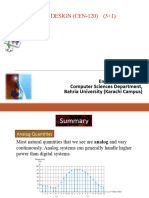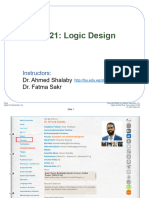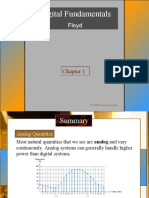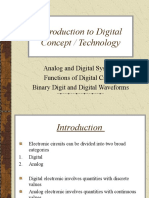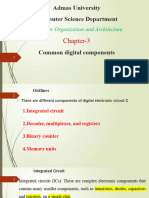0% found this document useful (0 votes)
86 views20 pagesSir Syed University of Engineering & Technology, Karachi
1. The document discusses the introduction to digital systems and logic design. It covers basic topics like analog vs digital signals, advantages of digital systems, binary digits, logic levels, digital waveforms, timing diagrams, and basic logic functions like AND, OR, and NOT gates.
2. The reading is from a textbook for a digital logic design course covering fundamental concepts needed to understand digital circuits and logic.
3. The summary provides a high-level overview of the key topics and concepts discussed in the reading material to introduce students to the basic building blocks of digital systems and logic design.
Uploaded by
Farrukh AbbasCopyright
© © All Rights Reserved
We take content rights seriously. If you suspect this is your content, claim it here.
Available Formats
Download as PPT, PDF, TXT or read online on Scribd
0% found this document useful (0 votes)
86 views20 pagesSir Syed University of Engineering & Technology, Karachi
1. The document discusses the introduction to digital systems and logic design. It covers basic topics like analog vs digital signals, advantages of digital systems, binary digits, logic levels, digital waveforms, timing diagrams, and basic logic functions like AND, OR, and NOT gates.
2. The reading is from a textbook for a digital logic design course covering fundamental concepts needed to understand digital circuits and logic.
3. The summary provides a high-level overview of the key topics and concepts discussed in the reading material to introduce students to the basic building blocks of digital systems and logic design.
Uploaded by
Farrukh AbbasCopyright
© © All Rights Reserved
We take content rights seriously. If you suspect this is your content, claim it here.
Available Formats
Download as PPT, PDF, TXT or read online on Scribd
/ 20




